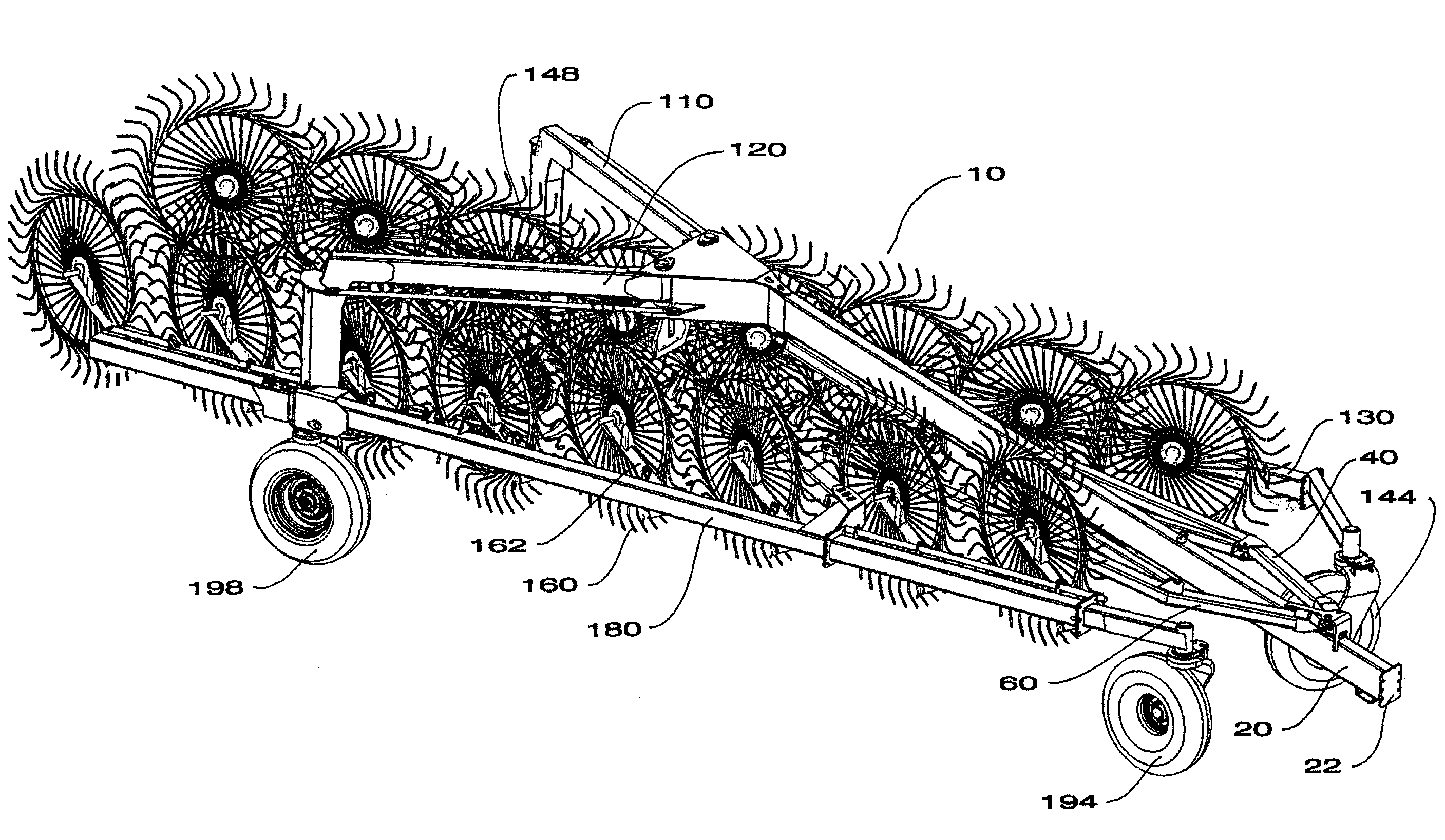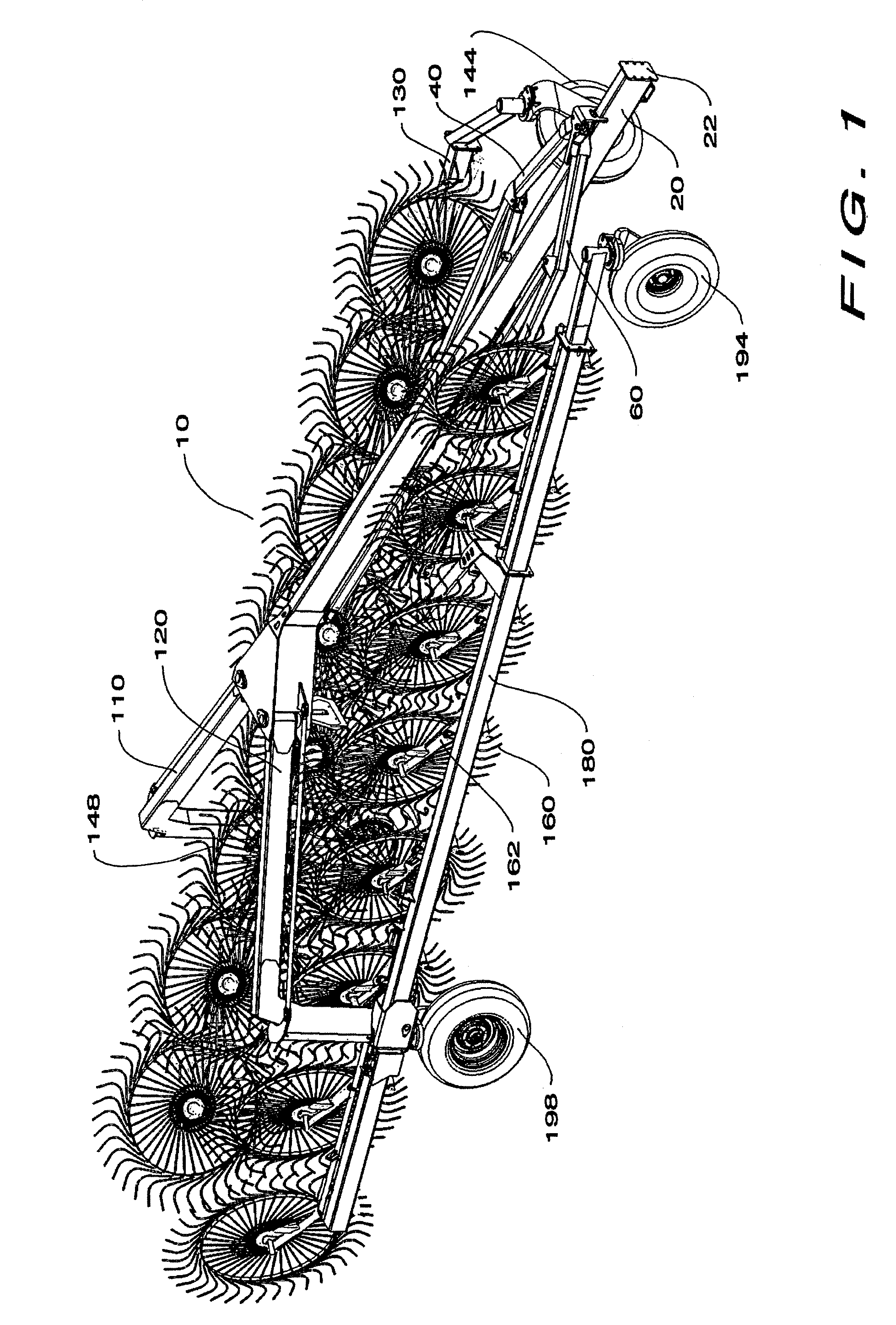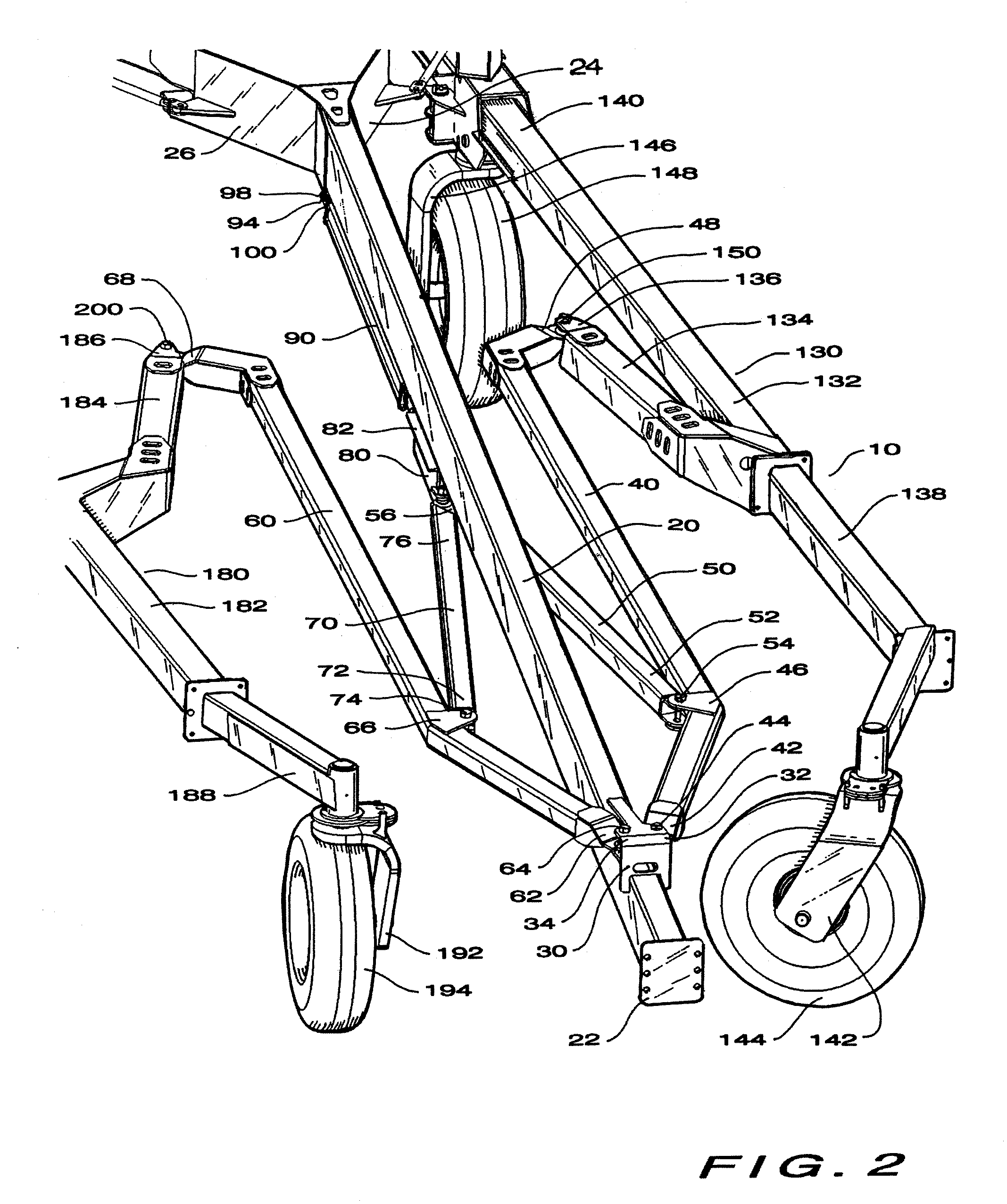Bifold rake
a rake and bifold technology, applied in agricultural machines, agricultural tools and machines, agriculture, etc., can solve the problems of long rake arms, disadvantages of fixed wheel width, long rake arms, etc., and achieve the effect of shortening the turning radius
- Summary
- Abstract
- Description
- Claims
- Application Information
AI Technical Summary
Benefits of technology
Problems solved by technology
Method used
Image
Examples
Embodiment Construction
[0026]With reference to FIG. 1, one non-limiting embodiment of the inventive rake apparatus is generally designated by the reference number 10. The rake apparatus 10 includes a tongue assembly 20, which includes a hitch 22 at a forward end (note that the hitch need not be connected at the very end of the tongue assembly, but can be positioned somewhat toward the middle). The rake apparatus is configured to be pulled forward by connection with the hitch 22. As viewed facing forward, toward the direction of travel, a left rake arm assembly 130 and a right rake arm assembly 180 each include a plurality of tined rake wheels 160 attached to the rake arm assemblies 130 and 180 by a plurality of rake wheel arms 162. The left rake arm assembly 130 also includes rake arm wheels 144 and 148, and the right rake arm assembly 180 includes rake arm wheels 194 and 198. The rake arm assemblies 130 and 180 are attached to the tongue 20 at the front by a left front rake arm positioner 40 and a right ...
PUM
 Login to View More
Login to View More Abstract
Description
Claims
Application Information
 Login to View More
Login to View More - R&D
- Intellectual Property
- Life Sciences
- Materials
- Tech Scout
- Unparalleled Data Quality
- Higher Quality Content
- 60% Fewer Hallucinations
Browse by: Latest US Patents, China's latest patents, Technical Efficacy Thesaurus, Application Domain, Technology Topic, Popular Technical Reports.
© 2025 PatSnap. All rights reserved.Legal|Privacy policy|Modern Slavery Act Transparency Statement|Sitemap|About US| Contact US: help@patsnap.com



